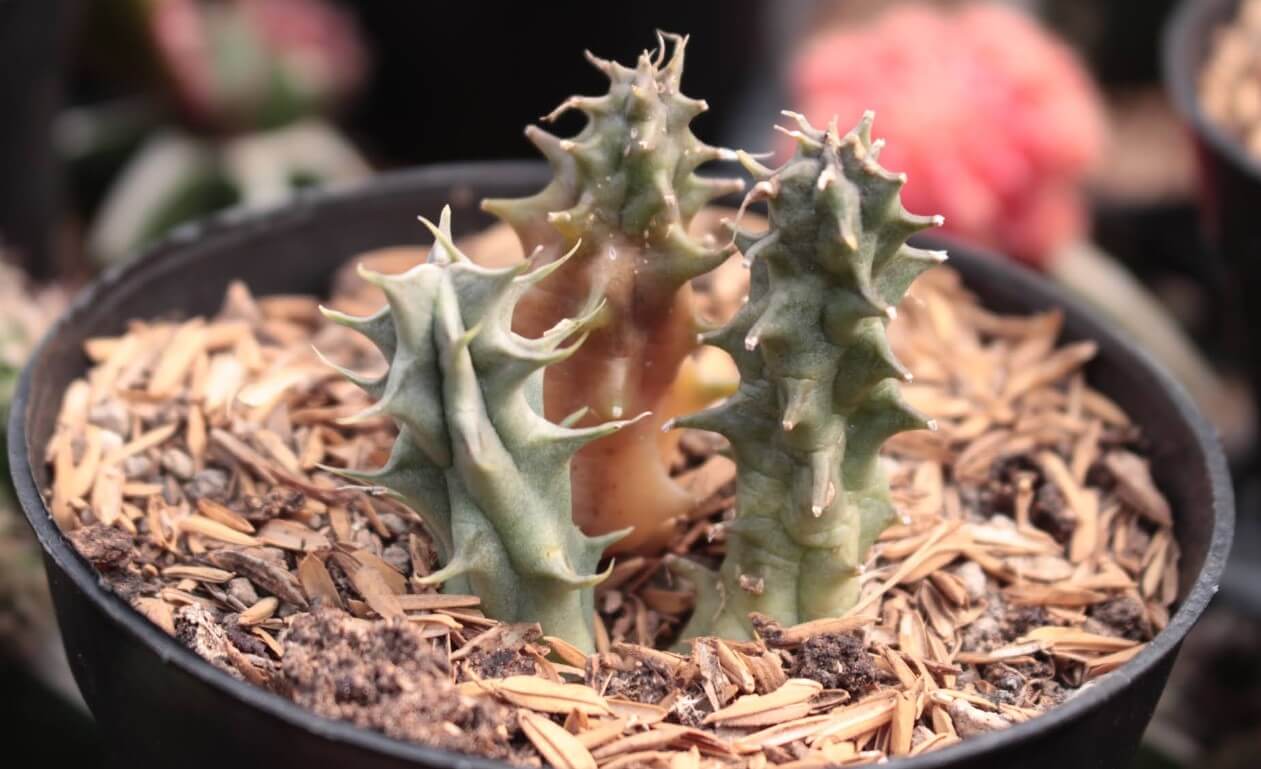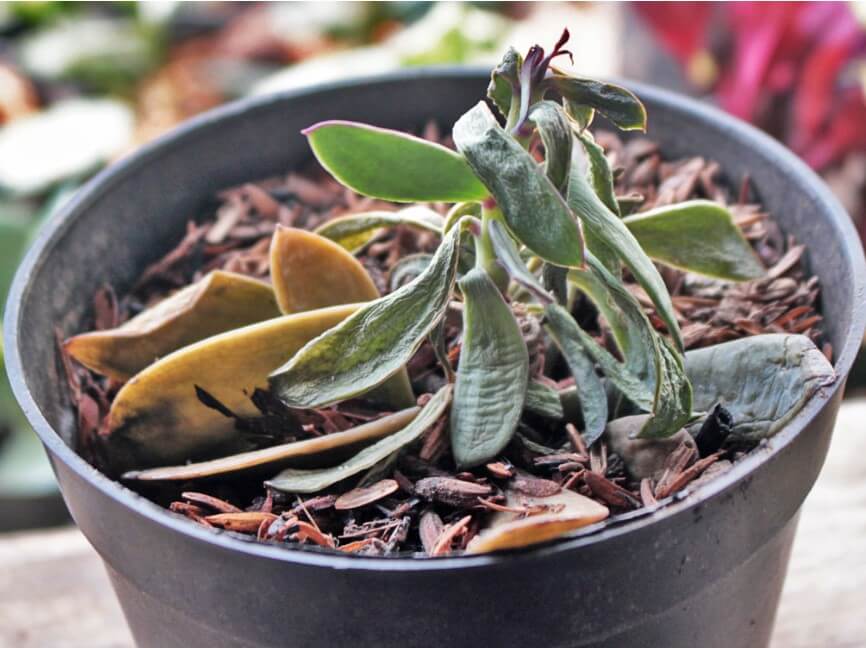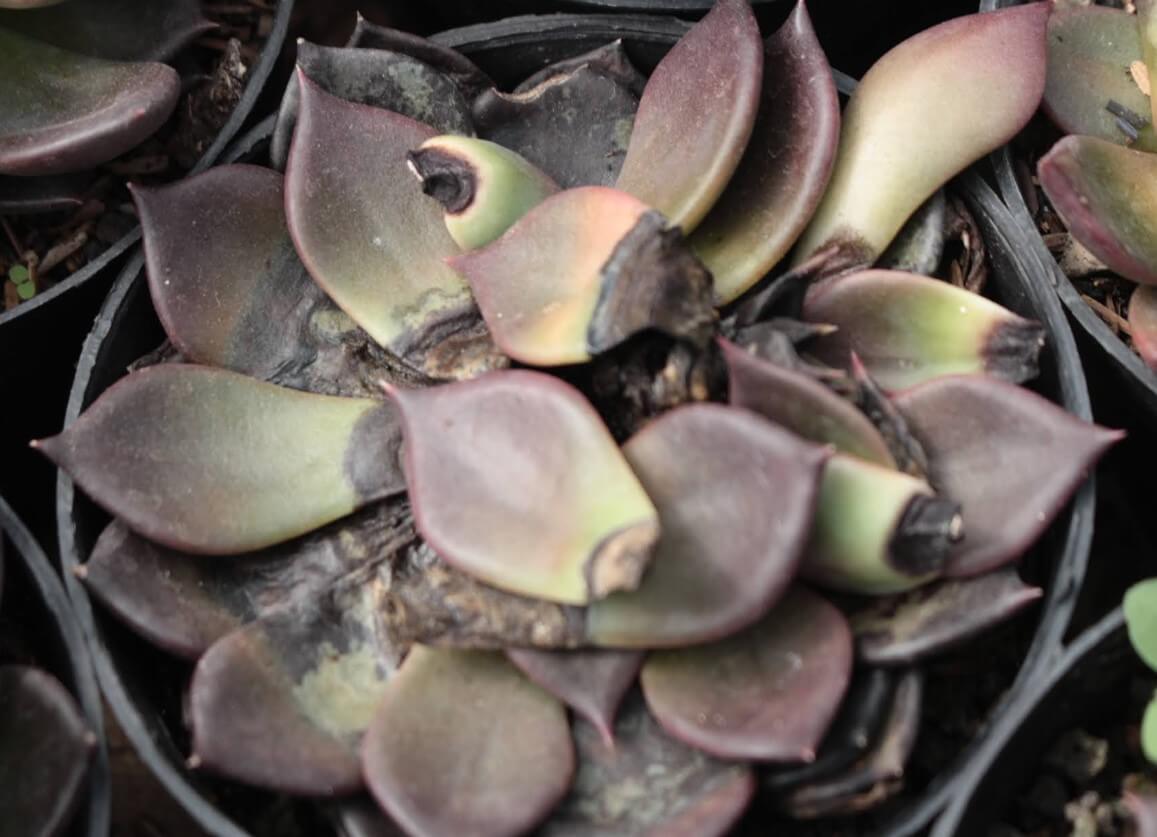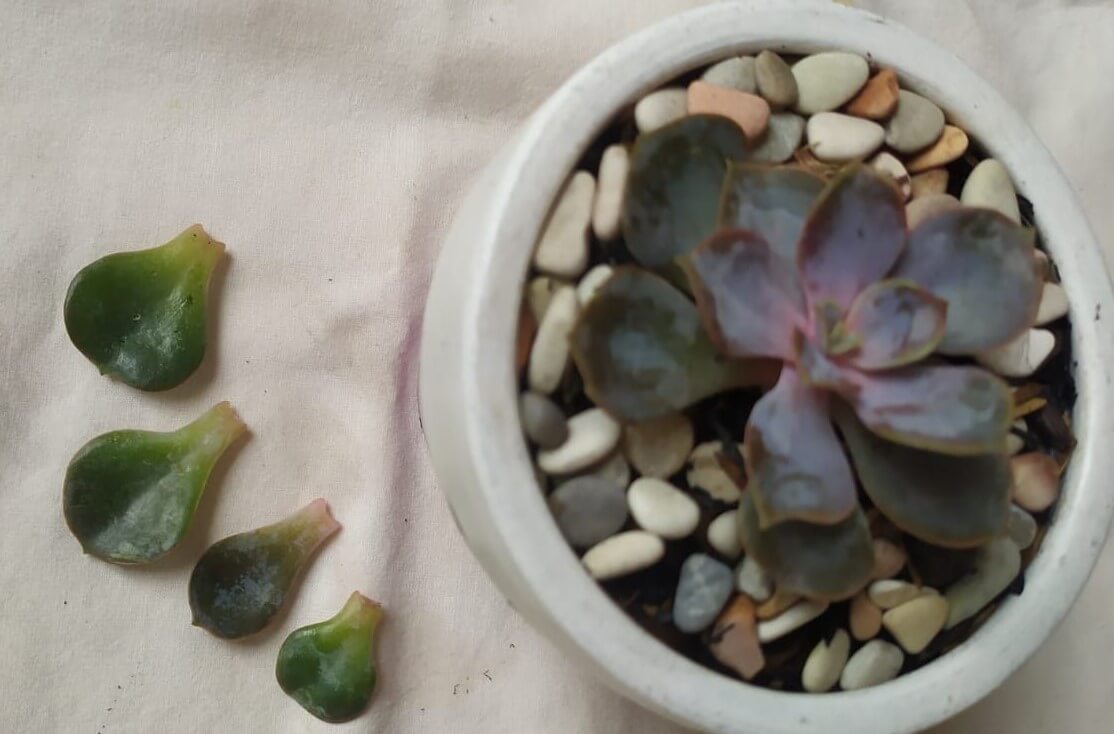Many people who keep succulents have seen their plants looking sad. The leaves droop down instead of standing tall and green. This is a problem many succulent owners face. There are some common reasons why succulents act this way.
In this report, we will look at nine usual causes for droopy succulent leaves. We will also explain how to fix a succulent that is hanging its head. Too little water, too much water, not enough sun, and other issues can make a succulent drop its shoulders. Learning the reasons should help gardeners raise their plants upright again.
Some succulents get enough water at first, then the soil dries out too much. This stresses the plant. Others sit in wet soil that does not drain well. Too wet or too dry stresses succulents. Not providing bright, direct sun leads to lanky growth and drooping. Problems like overgrown pots and root mealybugs also bring succulents down.
Identifying the cause helps gardeners remedy each situation. Adjusting water, moving to more light, repotting, and treating pests returns succulents to good health and stance. With the right changes, perked up succulents will stand as nature intended once more.

Why Are My Succulent Leaves Hanging Low
Many succulent owners notice the plant’s leaves looking limp and fallen. Drooping leaves typically mean trouble for the plant within. Several situations can result in this droop, such as water, sunlight, or temperature issues.
Fixing the downcast leaves usually involves handling the root of the problem. The key reasons leaves lose spirit include too much or too little rain, not enough bright sun, and changes in warmth. Addressing these nine typical triggers returns succulents to standing strong.
Too much waterlogged soil or too little water causes stress. An unhealthy balance depletes the plant. Lack of strong sun denies them the light needed for stiff structure. Other issues disrupting their growth are oversized pots restricting roots and mealybugs draining their strength.
By examining which factor is weighing the succulent down, owners can lift their leaves back up. Adjusting water, moving pots to sunnier spots, transplanting, and removing pests allows succulents to stand tall once more. Identifying and solving the underlying issue usually brings drooping succulents back to full health.

Too Much Watering
Succulents naturally thirst for dry soil. Their leaves are meant to withstand drought, not drown in downpours. Too much water brings these plants down quickly.
Their roots rot when wet soil stays that way. Drooping leaves are one sign the succulent is dying of thirst. Giving them too much rain is a common cause of this limp look.
Succulents need water only when top soil is bone dry, not before. Any soaking before then deprives these drought lovers of needed air. Even a week may be too often in some pots and climates.
Other warning signs of too much rain include leaves that wilt, spots that brown, and roots turning soft and mushy. This shows soaked soil has killed the plants thirsty roots.
Less is more when it comes to watering these tough yet tender plants. Waiting until topsoil is dry ensures their roots stay unclogged and strong, leaves remain upright and green. Too many drinks will drop even thirsty succulents.

Fixing Too Much From Watering
Once overwatered succulents are spotted, steps must be taken to lift their droop. Reducing rainfall by half provides time for drained soil to dry fully between drinks.
Proper pots with holes allow waterlogged dirt to escape and prevent future drowning. Succulent soil mixes tightly hold moisture without becoming muddy. Regular potting soil clogs easily.
If limp leaves show too much water has fallen for long, repotting rescues tormented roots. Cut away mushy dead roots before refreshing the soil. Only slight sprinkles are given as new roots spread through oxygenated earth once more.
Patience heals drowned succulents during their recovery. Slow sips replace relentless downpours. Drainage lets soil exhale built-up rains that caused limbs to drop. Proper soil gives sturdy succulents a home to stand strong in, come showers or shine. These fixes bring back life in leaves left limp by too much liquid.

Underwatering
While succulents store water, constant shortages still stress these plants. Leaves will droop as a last resort to save precious liquids within.
Although drier drinks suit them, some H2O is needed weekly on average. Less in colder months or dry areas however. This ensures roots keep leaves perky.
Other telltale signs thirst plagues a succulent include limp and brown leaves withered from the inside out. Soil Bone dry and growth hindered also shows underwatering inflicts slow decline.
When thirst makes a succulent wilt, reviving requires correcting the cause. Watering regained provides foundations for firm foliage once more. Consistent light sips supply balanced nourishment underground.
Succulents flexible enough to withstand drought still need rains replenish reserves. Drooping discloses dehydration if dryness outlasts their endurance. Quenching parched plants and soil lifts limp heads high again with proper care.
Fixing a Succulent’s From Underwatering
The initial step when evaluating limp leaves is assessing soil moisture. Feeling dry earth shows thirsty roots require relief.
Thorough soakings until excess flows the pot’s bottom ensures full replenishing underground. With dry soil surrounded by dry air above, stored fluids cannot last.
Testing with a finger provides an easy gauge if water is due. Dryness to the first knuckle signals it is time for drinks. Wetter means holding off a few more days.
Establishing a schedule secures consistent nourishment to come. Regularly following this routine maintains healthy plants in balance.
Dehydration saps energy until drooping signals distress. But well-watered succulents stand proud with reserves renewed by this fix. Hydration restores vigor leaving limpness in the past, roots and all revitalized at last.
Too Much Sunlight Weighs Succulents Down
Too much direct bright sun weakens succulents over time. Leaves droop as a sunshield to protect stressed plants within. Browning or pale blotches on foliage occur from scorched exposure.
In addition to drooping leaves, succulents in too much sun or heat can suffer from sunburned leaves, white or pale patches, and browning or scorching of the leaves.
Relocating to shade relieves sun-reddened succulents. Partial sun satisfies needs while indirect rays replaced harsh beams. Those indoors find east or west windows ideal all day.
Outdoors, morning or afternoon slots suit these sensitive sun-lovers best. Extremes of either end wears them down if lasting too long. Temperate zones suit them as greenhouse warmth would struggle some kinds.
When shade proves impossible, barriers filter solar intensity. Fans circulating cooled breezes also save succulents overwhelmed. Proper placement under filtered sun or shade cloth lifts formerly limping plants.
Balance protects these drought-tough beauties from burning daylight hours. Finding the spot shielding them midday restores straightened stems and spirits too long weighed down.
How To Fix It
Relocating limp leaves to shade provides initial relief. Seeking dappled daylight satisfies needs while direct sunrays once stressed are averted. Windows permitting sunrise or sunset rays suit succulents indoors through the warm patch.
Outdoors, choose east or west where sun greets plants in doses for several hours daily. Buy as nature intended when proper placement prevents hours under beams.
Insufficient shade demands protecting filters. Cloth woven coarse as nature’s canopy diffuses burning brightness. Fans circulating air cools those stuck in spots too toasted otherwise.
Repositioning also rescues from unfit temperatures. Rugs or woodland windswept thrive where thermometers show solace within moderate margins. Foliage fanning revives the overheated till calendars or climes change.
Balance is key to lifting droop – too much of any factor burdens succulents. Finding filtered light and temperate conditions spares sensitive sun-lovers future wilt by lifting stresses weighing branches downward.
Too Little Light Weighs Down Succulents
Insufficient sun also causes drooping over weeks. Where counterparts wilt under rays, others falter with inadequate brightness.
Leaves limp to preserve reserves without sufficient solar stocks. Signs of hunger included drawn-out stems searching for what surrounding soil and air lack. Paling or yellowing foliage signals starvation within.
Withholding growth reflects shortchanged access to energizing daylight. Limited photons cannot power straight spines or lush hues as under stronger spotlight.
Providing inadequate wattage over time burdens succulents equally as overserving. Relocating to supplemental lighting or outside in breaks replenishes what feeble fluorescents or deep shade denies.
Balance is key – too much baking or too little feeding strains these desert dwellers. Diagnosing the cause lifts whichever weight pressed stems earthwards. Adjustments spare future flagging where resources are restored.
How To FIx It
Relocating to sunnier spots revives faded foliage. Windowsill westward or sheltered southside patches satisfy solar necessities.
At minimum, four hours direct rays are required. Dappled areas sufficiently sun-kissed yet shaded from scorching suit these habitats best.
Supplemental grow lights supply photons when repositioning fails. Summer stints outside also bolster weakened stock. Returning indoors before intense midday rays saves from burns.
Ongoing insufficiency slowly starves succulents of sustenance. Determining the problem helps lift that burden by adjusting surroundings. Filtered daylight in moderation prevents future wilt from either light excess or shortages.
Balance is key to perking drooping plants—too little or much of any element stresses sensitive compositions. Minor adjustments restore what deficiencies formerly weighed stems earthbound.
Temperature Swings Stress Succulents
Changing climates compromise normally sturdy stocks. Fluctuations between spaces or unstable indoor thermostats stress succulents into drooping stances.
Consistent 65-75°F provides optimal comfort zone. Spikes or plunges beyond this temperate territory trigger protective postures.
Drafts, direct sun, and proximity to vents or furnaces introduce intolerable inclemencies. What these desert dwellers normally withstand, extremes generated from such variables overwhelm.
Leaves limp as warning the surrounding climate no longer caters to their specialized needs. Roots release fluid reserves preparatory for survival mode until stabilizing adjustments alleviate environmental assaults.
Diagnosing temperature variations identifies the burdens burdening branches downwards. Repositioning or insulation protects from problematic plights, restoring vigor as surroundings regain consistency crucial to succulents.
How To Fix It
Here are some tips to fix temperature fluctuations causing drooping:
- Move succulents to a more stable indoor zone between 65-75°F if outdoors swings wider
- Shield from direct sun heating certain spots above comfort levels
- Relocate before winter’s chill drops below subsistence threshold
- Find naturally temperate spots like north sides of buildings
- Insulate pots from conducting ground temperatures if soil fluctuations stress roots
- Programmable thermostats maintain consistent controlled comfort indoors
- Monitor furnace/vent/sun exposure skewing surrounding climate
Consistency benefits succulents evolved for stable norms. Diagnosing stressors empowers adjusting surroundings restoring turgor. Minor modifications lift fluctuant fluctuations burdening branches beyond withstand abilities. Balance bestows protection from harms of heat or cold extremes.
Root Rot Roots Succulents’ Demise
Though drought-durable, excessive wet invites a different doom – root rot renders tough stocks drooping masses. Fungus spores or bacteria infecting sustaining roots inflict affliction.
Telltale signs reveal rot’s spread below: blackened or browned root fibers, fetid fragrances escaping soil, and leaves transforming flaccid and foul-smelling as well.
Overwatered soil denied drainage allows lethal anaerobic conditions to fester and feed detrimental microbes unchecked. Stems and stored resources cannot compensate for rot undermining foundations as leaves wilt helplessly.
Recognizing these warning traits before rot runs rampant empowers salvaging stricken specimens with rapid drying, pruning, and replanting in sterilized soil with appropriate spacing for aeration between future feedings. Preventative strategies like amended soil and monitored moisture spares other succulents similar ravaging fates. Balance in hydration, as in light, is key.
How To Treat It
Here are tips to treat root rot causing drooping:
- Carefully remove plant from soil and inspect roots for signs of rot
- If black/brown or foul-smelling, trim away infected root tissue
- Transplant into fresh, well-draining soil in a clean pot
- Improve drainage and airflow around roots to prevent recurrence
- Water only when soil is dry to avoid oversaturation
- Increase sunlight which supports healing and acts as fungicide
- Mix 3% hydrogen peroxide solution to spray or water with for additional disinfection
- Control moisture levels and avoid soggy conditions optimal for rot microbes
- Check roots regularly for regrowth after trimming and potential reinfection
With prevention and rapid response to symptoms, succulents can overcome root attacks causing wilting. Consistent balancing of soil and sun restores strength to recovered plants.
Overfeeding
Sensitive stocks withstand too much fertilizing just as they do under or over watering. Nutrients essential in moderation become harmful in surplus.
Leaves limp and yellow as plants absorb fertilizer beyond utilization. Growth stalls and foliage yellows and drops prematurely under excessive allotments.
Mineral amendments administered sparingly through measured feedings prevents accumulation weakening resistant strengths. Infrequent light applications match seasonal increases preventing subsequent stress.
Delicate balances maintained by desert-bred genes cannot adjust to unnatural abundances. For succulents adapted minimalism, more proves toxic rather than nourishing.
Diagnosing droop’s source empowers correcting causes by leaching contaminated soil and adjusting feeds conservatively within thresholds withstand able. Preserving primordial habits protects sensitive constitutions from harms brought by human interventions misunderstanding moderations crucial to survivors of arid climes.
How To Revive It
Here are tips to remedy over-fertilized succulents:
- Withhold fertilizer application and allow soil to fully dry between waterings
- Repot into fresh potting medium to remove contaminated soil
- Leach pot by submerging in water to flush excess nutrients
- Only fertilize during active growing periods in spring/summer
- When feeding resumes, use diluted liquid fertilizer at half strength
- Monitor succulent’s response and reduce frequency/amount if stress recurs
- Gradually reacclimate plant by limiting nutrients introduced
- Maintain optimal light, temperature and drainage to support recovery
- Regular purging prevents future accumulation overwhelming roots
- Understanding seasonal/individual needs ensures balanced rations
Being attentive and adjusting care conservatively revives drooping from hyper-nourishment. Time and tailored restorations lift burdens weighing once thriving succulents downward.
Pests And Diseases
Invasive insects overwhelm what stresses normally fail to fell. Aphids, mealybugs and spider mite colonies drain stored liquid gold, exhausting defenses evolution endowed.
Leaves droop when sap-sucking swarms steal sustenance faster than roots can replace. Sticky honeydew and visible vermin alert owners infestations progressed too far untreated.
Prevention remains preferable through isolated quarantines of newcomers, hygienic clipping off infected portions before spread, and non-chemical sprays as needed according to invader identified.
Sanitizing through appropriate pesticides guarantees no survivors to recolonize once infirmities appear. Diligent detection and prompt removal prevents pest pressures succumbing hardy heritages.
Rehydration and increased barriers restore turgor temporarily until root strengths recover fully from imposed afflictions. Clean habitats defend from predators imperiling perennially these drought masters.
Here are tips to remedy pest-infested succulents:
- Carefully remove from pot and closely inspect foliage and crevices
- Spray infested areas with organic insecticide or insecticidal soap if pests found
- Wash leaves thoroughly with strong water to dislodge insects and residue
- Isolate in direct sunlight which deters pests and aids drying
- Mix 1 part dish soap to 10 parts water and spray leaves avoiding soil
- Repeat applications every 3-5 days to target new hatchings
- Check root system for pupating bugs and remove any infected plant parts
- Monitor for lingering signs and re-treat as needed for full eradication
- Prevent reintroduction by cleaning trimmers between plants
- Maintain balance of needs with light, spacing to harden defenses
With diligence removing hidden threats, consistent monitoring prevents pests weighing
Transplant Troubles Succulents
Relocation exposes vulnerable underpinnings to afflictions as replanting disrupts water, nutrient and sun balance. Roots disturbed recover slowly with care.
Aeration denied new environments encourages rot’s advance in oversaturated dirt, wilting foliage above-ground as root death spreads unseen.
Minimize disruption by amending acceptably draining substrate beforehand, timing to dormancy when photosynthesis lowest dependence on foundational sustenance.
Inspect roots before replanting, pruning necrotic segments which foster rot’s growth. Shield fragile fibers from breaks until regrown and acclimated in fresh positions.
Monitor water needs closely as roots regain lost connections, misting to prevent desiccation yet avoiding pooled standing contents lethal below.
With patience and precautions, time mends transplant trauma’s damage, restoring turgor and vigor as foundations firmly anchor once more. Mindful management lifts distress weakening withered wardrobes.
Here are tips to help a succulent recover from transplant shock:
- Be patient, giving it time to adjust to the new environment
- Avoid watering for at least 1 week to let roots establish
- Use fast-draining soil to prevent root rot from overwatering
- Check roots and trim any showing rot before/after repotting
- Transplant only during active growing seasons in spring/summer
- Consider a humidity dome or bag to retain moisture as it adjusts
- Mist leaves occasionally if signs of dehydration appear
- Move to partial shade if leaves wrinkle to avoid sunburn
- Watch for pests taking advantage of plant’s weakened state
- Water sparingly until new growth confirms recovery
With gentle care avoiding extremes, transplanted succulents can overcome stresses of replanting if given proper time and soil conditions to rebuild lost strengths.
Final thoughts on succulent drooping issues:
- Succulents are resilient, but sensitive to changes in their basic needs
- Drooping leaves often indicate an underlying problem like overwatering
- Carefully inspect your plant’s growing conditions and identify what may be causing stress
- Common issues include irregular watering, pests, excess fertilizer, temperature changes
- Address the root cause by improving drainage, sunlight exposure, pest control
- It may take time for your succulent to recover after an imbalance is corrected
- Watch for root health during recovery and carefully monitor its needs
- Seasonal awareness helps keep their minimal requirements in homeostatic balance
- With observation and adjustments tailored to individual circumstances, drooping succulents usually bounce back to full vigor
By understanding your succulent’s specific signals for distress and implementing gentle remedies attentively, you can help keep its waxy leaves standing strong. Steadfast care pays off in thriving desert darlings.

